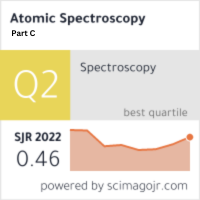Unlocking Agricultural Potential and Geotechnical Insights through IoT, Data Science, and Dynamic Load Analysis"
Keywords:
Leveraging, Data, Science, Agricultural, IoT, Comprehensive, Future, Directions.Abstract
The agriculture industry is facing numerous challenges such as increasing global population, climate change, and limited resources. To address these challenges and ensure sustainable agricultural practices, the integration of Internet of Things (IoT) technologies and data science has gained significant attention. This paper presents a comprehensive review of the state-of-the-art techniques and applications of agricultural IoT combined with data science methodologies. The proposed review highlights the key components of an agricultural IoT system, including sensors, actuators, communication networks, and data analyticsThis paper digs into the usage of information science procedures like AI, information mining, and prescient demonstrating for gathering significant bits of knowledge from the broad information produced by IoT gadgets conveyed inside the horticultural area. It covers a scope of information sources, incorporating climate information, soil dampness levels, crop wellbeing data, and domesticated animals observing information, and explains on the relating information science techniques utilized for examination. In addition, real-world case studies and successful applications of agricultural IoT and data science methodologies in a variety of fields, such as precision farming, livestock management, and supply chain optimization, are presented in the document. The benefits of these applications, such as increased crop yields, decreased resource consumption, and enhanced decision-making capabilities, are highlighted .Besides, the difficulties and impediments related with the reconciliation of rural IoT and information science are tended to. Data privacy and security issues, scalability issues, and the requirement for standardized protocols and interoperability are among these obstacles.The paper concludes by identifying emerging trends and future directions in agricultural IoT and data science, such as edge computing, blockchain, and AI-powered analytics, which hold immense potential for transforming the agricultural landscape. Overall, this paper provides a comprehensive overview of the role of data science in agricultural IoT, highlighting its applications, benefits, challenges, and future prospects. It serves as a valuable resource for researchers, practitioners, and policymakers interested in harnessing the power of data science to optimize agricultural practices and ensure food security in an increasingly interconnected world. For the review and plan of geotechnical developments helpless to dynamic burdens like quakes, the powerful soil boundaries (shear modulus and damping proportion) are urgent. Cyclic fundamental shear tests were directed to examine how the shear modulus and damping proportion fluctuate with various quantities of parts. These tests were performed at different strain amplitudes: 0.011%, 0.11%, 2%, 2.53%, and 5.6%, and a repeat pace of 1.6 Hz. The tests were conducted under a variety of hub stress conditions: 149 kPa, 285 kPa, and 500 kPa.



